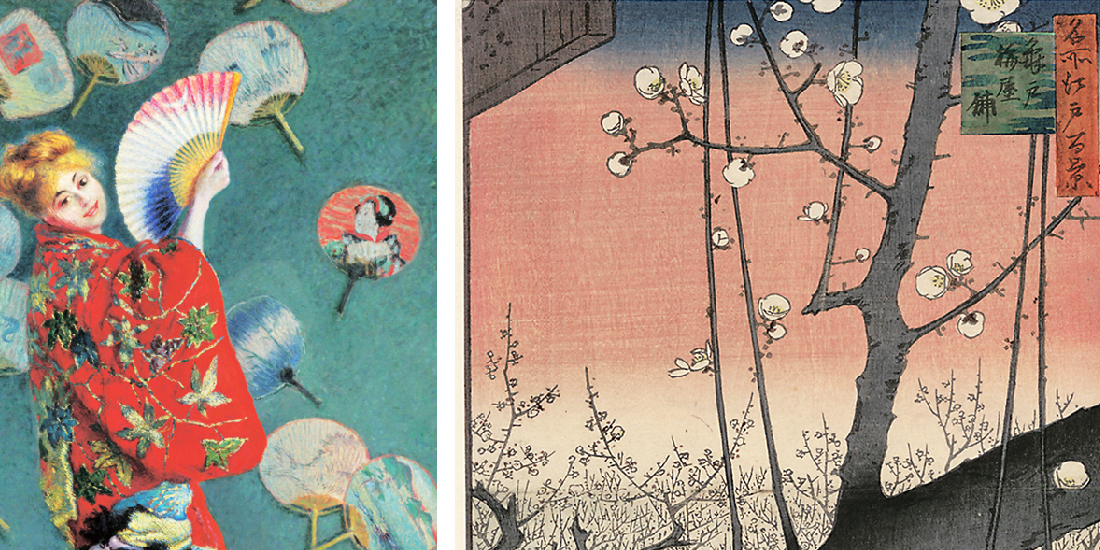
Claude Monet's La Japonaise: a mix of orient, irony, and modernity
Jayde BrowneShare
"La Japonaise," painted by Claude Monet in 1876, depicts the artist's wife, Camille Doncieux, shown full-length standing on a Japanese tatami mat and wrapped in a vivid red kimono richly decorated with golden motifs representing samurai warriors. Camille wears a blonde wig and holds in her right hand a fan painted with the colors of the French flag, emphasizing her Western identity. Behind her unfolds a varied background filled with Japanese fans, from which stylized landscapes and oriental figures emerge. The scene conveys a sense of theatricality and playfulness: the main figure, with her smile and direct gaze, stages a meeting between cultures, suggesting a subtle irony that highlights both the fascination and the superficiality of the exotic taste widespread in Paris at the time.
BUY THE REPRODUCTION OF "LA JAPONAISE" BY CLAUDE MONET

Style
The work belongs to the French Impressionist period but stands out for its combination of meticulous details and more fluid brushstrokes. Monet is deeply inspired by the Japonisme movement, which reflects the fascination and fashion for Japanese art and culture that swept through France toward the end of the nineteenth century. This influence appears in the use of typical accessories and a range of oriental motifs, as well as in the compositional structure. Although some details of the kimono are rendered with great care, the overall image maintains the visual freshness characteristic of Impressionist painting, offering a synthesis between East and West.
Color and Lighting
The color palette of La Japonaise is dominated by bright reds, gold, white, and touches of blue, strongly contrasting with the light skin tone and blonde wig of the subject. The play of vivid and saturated colors aims to create an atmosphere of festivity and exuberance, highlighting both the allure of the Japanese world and its decorative interpretation according to Western sensibilities.
Handling of Space
The depth of the space is shallow, almost flattened: Camille is positioned very close to the picture plane, and the fans surrounding her seem suspended on a single surface, almost evoking a theatrical set. The perspective relies more on the juxtaposition of planes and decorative patterns than on three-dimensional construction. This treatment of space, inspired by Japanese prints, gives the painting a sense of visual immediacy and once again emphasizes color and surface.
Composition and Framing
Monet arranges the composition around the slender figure of Camille, placed slightly in profile but with her face turned toward the viewer. The kimono occupies the central part of the scene, while the fans decorate the background, adding rhythm to the painting and guiding the eye along varied decorative patterns. The balance of the scene plays on the contrast between the model’s sensual and relaxed pose and the orderly arrangement of objects, while the choice of a frontal framing amplifies the theatrical effect and highlights the scenographic aspect of the scene.
Technique and Materials
La Japonaise is executed on canvas using oil paints, a technique Monet employs to achieve both the tactile density of the embroidered details on the kimono and the fluidity of the brushstrokes in the rendering of the face and background. Oil allows the layering of both transparent and opaque layers, enabling modulation of brightness and color variations. Monet uses brushes of varying sizes to accentuate surface differences between the elaborate garment, decorative fans, and Camille’s skin, thus providing great visual variety to the painting’s elements. The choice of a large canvas enhances the monumentality of the figure, making Camille’s presence magnetic and dominant.
